If you’re looking for a marketing tool to increase your profitability, you should definitely explore the benefits of landing pages and how they can help you towards great results. Both for generating new leads and increasing your sales.
Landing pages can be used by any business, regardless of industry niche or size, to bring in new customers and create growth for your company.
Let us guide you through what a landing page is and how it can help you achieve profitable results for your business.
What is a landing page and why are they important?
A landing page is a stand-alone web page used for marketing and specific marketing campaigns where the goal is to persuade visitors to take an action of your choice. For example, it may be to get visitors to sign up for a newsletter, to collect their contact information via a form, or to get them to buy a product.
Landing pages are commonly associated with pay-per-click (PPC) and social media advertising campaigns, but they are not limited to paid advertising. They can be found and reached from all kinds of channels – email campaigns, websites, and organic search results. The list can go on and on.
Unlike a website or home page that usually provides general information about a business, landing pages are built and specifically targeted to different audiences with one goal and purpose – to convert visitors into leads or customers.
What is crucial about a landing page is that it needs to be of high quality and only built towards one specific goal. It is also important that the communication on your landing pages is crystal clear and is not leading visitors in different directions.
If the communication is not on point, there is a high chance of confusing the visitors, which may lead to you missing the opportunity to convert these people into paying customers.
As landing pages are made and designed for specific audiences, it’s easier to guide visitors through their buying journey and thus create conversions.
That is why landing pages are an incredibly powerful tool to be a part of any marketing campaign.
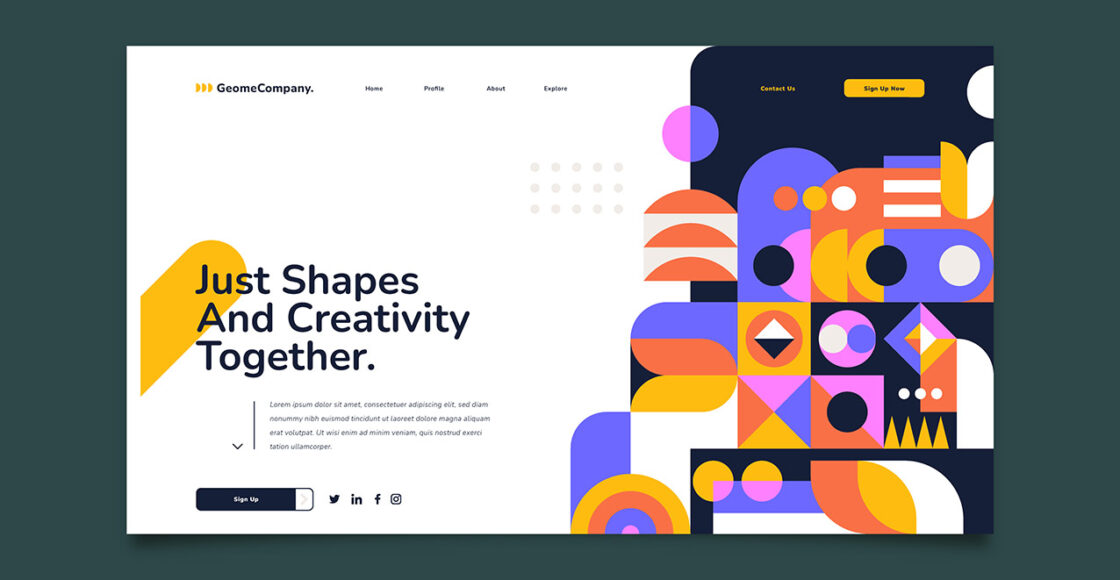
What is the difference between a landing page and a website?
The main difference between a landing page and a website is that a website contains more links and distractions. On a website, you will often find a navigation menu at the top, links in the footer, and lots of links in the page content.
The problem with a website is that from here, visitors are free to go anywhere. They can explore all the product and service pages, read a few blog posts, visit the contact page, or read through the terms and conditions – but it won’t necessarily lead to a purchase or collecting a new lead.
A landing page, on the other hand, is very targeted. You’ll find fewer links, your call-to-actions will be more focused, and the landing page content will lead toward the same goal.
Having fewer links removes extra distractions while helping visitors to stay focused on what you want them to do.
Types of landing pages
Essentially, there are two types of landing pages, one for generating leads and the other for generating clicks. There are many variations of these two types, and what is best depends on what specific goal you or your business may have, but the principle is always the same.
Lead generation landing pages
This type of landing page focuses on collecting user information from visitors and potential customers, in other words, leads.
The most common form of lead generation is through a form. In exchange for something of value, such as a free trial or a guide, visitors provide you with information such as their name, email address, and phone number. If you want to segment your leads further, you can ask for more specific information, such as age, type of work, and interests.
You can then start contacting leads using the information you’ve gathered from your forms and guide them through the buying journey to becoming a paying customer.
It’s common in business-to-business (B2B) and for companies selling high-priced products to use lead generation to gather a list of potential customers.
The reason for this is potential customers are not always ready to purchase at the first stage because of the price or because they are unsure whether a product or service is the right choice for them.
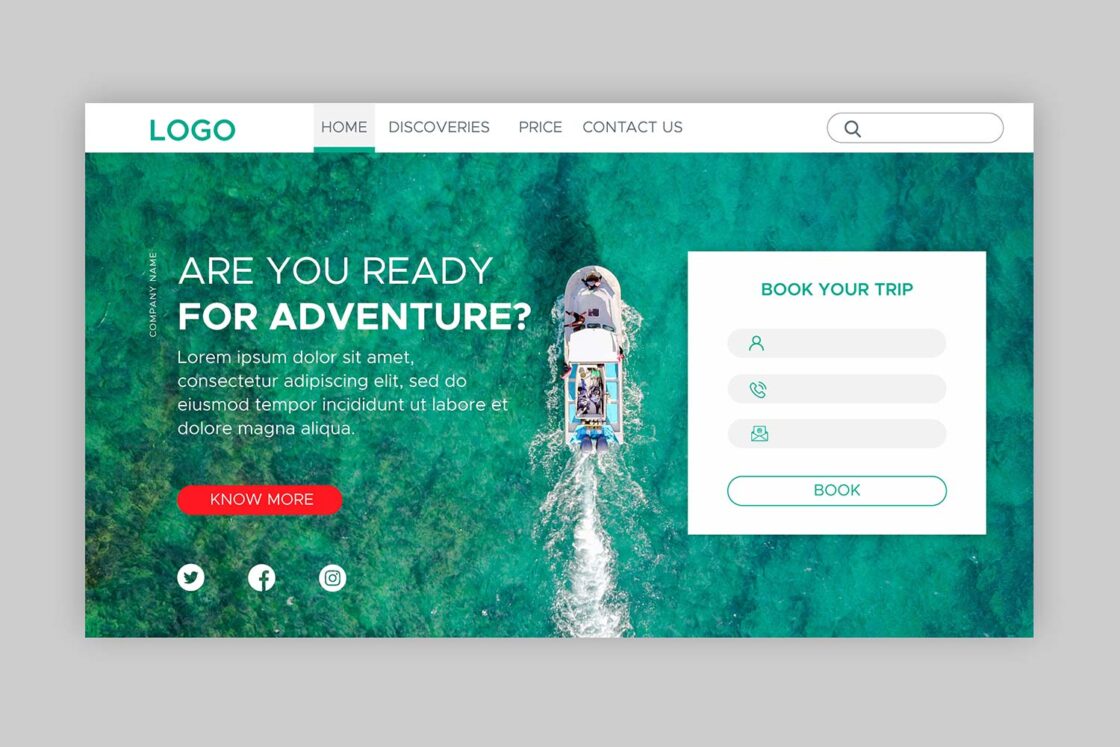
Click-through landing pages
Unlike lead generation, which uses forms to reach your goal, landing pages for clicks focus on call-to-action (CTA) buttons. In practice, it means if visitors click on a button, they get redirected to a page where they can perform the desired action, usually a transaction or some form of a sign-up.
Click-through landing pages are commonly used in e-commerce, SaaS, and other websites and companies focusing on sales and sign-ups rather than collecting user information about visitors.
This landing page type is well suited to products and services where the buyer journey is not very demanding, either in terms of time or money.
It is not uncommon for these landing pages to contain compelling sales information about the product and service to further engage potential customers into taking a desired action.
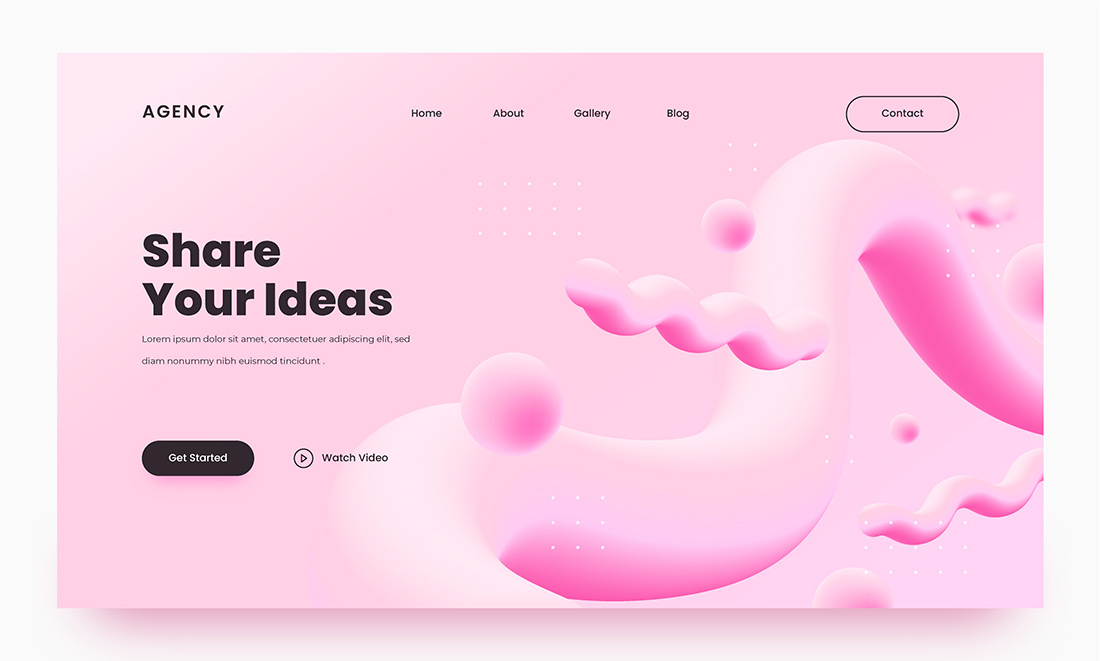
Benefits of landing pages
Gather more subscribers to your email list
Offering something of value on your landing page in exchange for visitors entering their name and email address can quickly help you grow your email list.
Visitors who have given you their email addresses through a form in exchange for content or information have done so because they have shown interest in what you have to offer. This ensures that your email list gets filled with more quality leads.
It can be a good idea to send a confirmation or thank-you email after a visitor has received or downloaded your offer from your landing page. Doing so allows you to communicate additional content to get your potential customers closer to becoming paying customers.
At Get a Newsletter, you get the confirmation or thank-you page pre-configured and connected to your landing page, which enables a lightning-fast workflow. All you have to do is to design the confirmation or thank-you page and fill it up with your content. We’ll do the rest.
Saves resources
It is perfectly possible to create similar landing pages directly on a website. The problem is that it’s common for marketing teams and people, in general, to be missing the developing skills required for that type of work.
Therefore it tends to take precious time and money to create landing pages on a regular website, as it requires you to hire external assistance.
The fact that anyone in a company can create, adjust and publish landing pages on their own using a tool, such as Get a Newsletter, saves both time and money as the company is no longer dependent on internal or external development skills.
That allows you to create new campaigns in a short period of time and optimize current campaigns for the best possible results.
Provides insights about your target audience
A company should always strive to get to know its target audience as well as possible to see what works well and not well in how you communicate with them.
By creating and testing landing pages with different offers and content, you can track and measure how your landing pages perform and see which pages convert the most. This way, you can find out, among other things, what content your audience likes and also which channels your audience prefers most.
For example, a marketing campaign that includes a landing page can result in email traffic generating 200% more sales or leads than social media traffic, even though the company spent twice as much time producing content and promoting the campaign on social media.
In this way, the company can adjust its marketing strategy and direct future campaigns towards email more, as it probably would lead to a better result than if it had continued in the same direction as planned.
The more insights you have about your target audience and the channels they are coming from, the more profitable you can be with your landing pages and marketing campaigns.

Allows for an introduction to the company
When users visit your landing page, they may not have heard of your brand before. That can lead to uncertainty and factor in new users not purchasing from you as they don’t know what to expect from your brand and products.
Landing pages give you the space to do just that, to tell them who you are, what you have to offer, and why what you offer is better than the competition.
Isn’t it enough to tell people about your company on your website?
Not necessarily.
It depends on the channel your users are coming from and assumes they know about your website or are willing to spend their time looking it up.
For example, it’s common in PPC and digital advertising for new users to connect with your brand for the first time. They have no idea who you are, but they are far into their buying journey, are willing to buy, and have most likely landed on your landing page because you sell the product they are interested in buying.
At this stage, it’s important to remove distractions and keep the user focused on your landing page and what you want them to do. Once users click away from your landing page, whether to your website or another page, there’s a good chance that distractions will occur and the potential customer will be gone.
That’s why you should give a brief introduction about who you are directly on your landing page, thus avoiding distractions between you and potential customers and making them more comfortable completing the purchase with you.
Landing pages give room for testing
Landing pages allow you to test different variations of layout, design, and content to reach the highest conversion rate possible. They also make it easier to take risks and try out new things with designs before publishing new pages on your website.
Experimenting with your website is often more difficult, as it can require significant resources and changes to design and infrastructure.
In addition, landing pages can easily be updated, adjusted, and deleted, which is not as easy as on a website.
For example, a test might involve two landing pages having different main headings and images, with landing page B getting 15% more conversions than landing page A because it was probably more appealing to the target audience.
By testing and optimizing your landing pages, you can quickly get more leads and increase sales for your business.
Strengthens your branding and credibility
A landing page combined with social proof, i.e., customers giving reviews about your product or service, has proven to be an effective way to increase conversions and the credibility of your brand.
If you are hesitant to buy a product you don’t know much about, showcasing customer reviews can lend much more credibility to the product being of high quality and make you more comfortable to go through with the purchase.
Having simple and clear communication that explains the value of what you offer is always preferred by visitors, and with landing pages, there is no difference.
With high-quality landing pages, you not only create sales and leads but also strengthen your branding.
A customer isn’t always ready to purchase right on the spot, but because the customer perceived your landing page to be of high quality, it can help them remember your brand in the future when they’re further along in their buying journey.
If customers have a good experience with your landing page and brand, it’s not uncommon for them to recommend your brand to those around them as they felt you were a company that exuded quality right through.
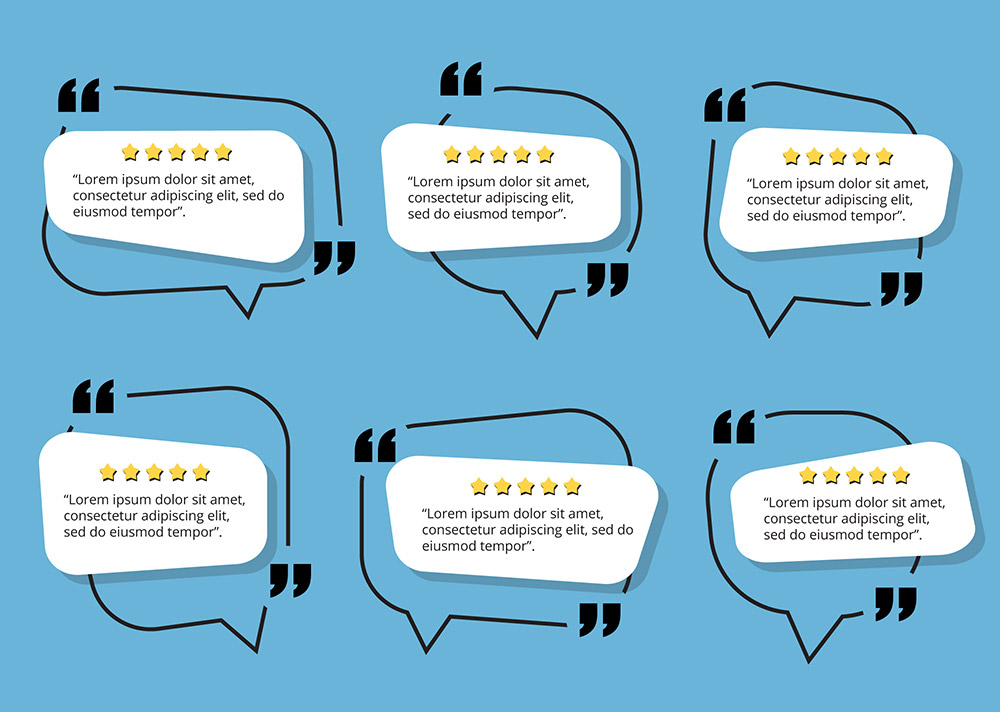
Tips on how to get started with landing pages
1. Find a tool to create landing pages
The first step to creating landing pages is to find an easy-to-use tool that allows you to design landing pages to your liking. As a business owner, it’s a great advantage that the tool allows you to add fonts and graphics to support your brand.
It is also a great advantage if the tool has a fast learning curve and workflow, the best being a tool with a drag & drop builder.
Luckily, Get a Newsletter offers landing pages that include all of this and a variety of landing page templates that can quickly help you get started and get inspired.
2. Use landing page templates
Once you’ve found your landing page tool, it can be a good idea to put yourself in a good starting position by using landing page templates. Templates can give you lots of inspiration for your landing pages and can be used straight away after a few tweaks if you wish. It’s entirely up to you!
Don’t be afraid to create several variations of landing pages to compare which layout and design give you the most conversions
Landing page templates
Start converting your visitors into paying customers with landing pages.
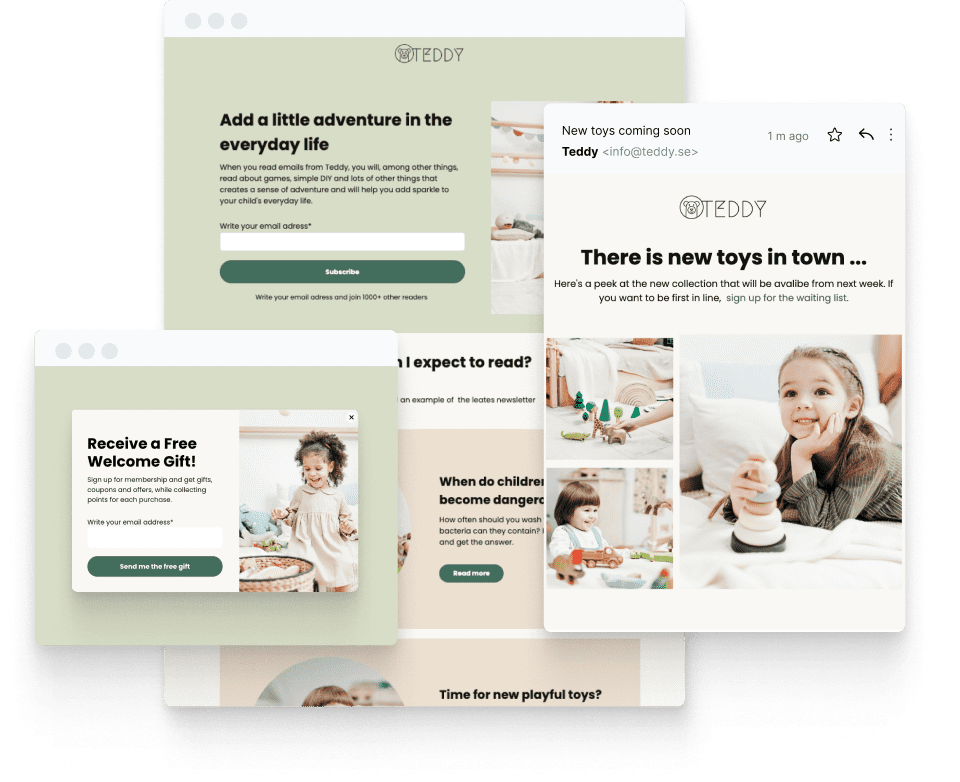
3. Adapt landing pages to your goals and target audience
Don’t forget to customize and adapt your landing pages and content to your goal and target audience. It’s important to communicate the value of what you offer on a landing page, whether you’re collecting user information from visitors or trying to get them to click through to another page.
Find out how to structure a landing page that converts
Landing page examples
Sales
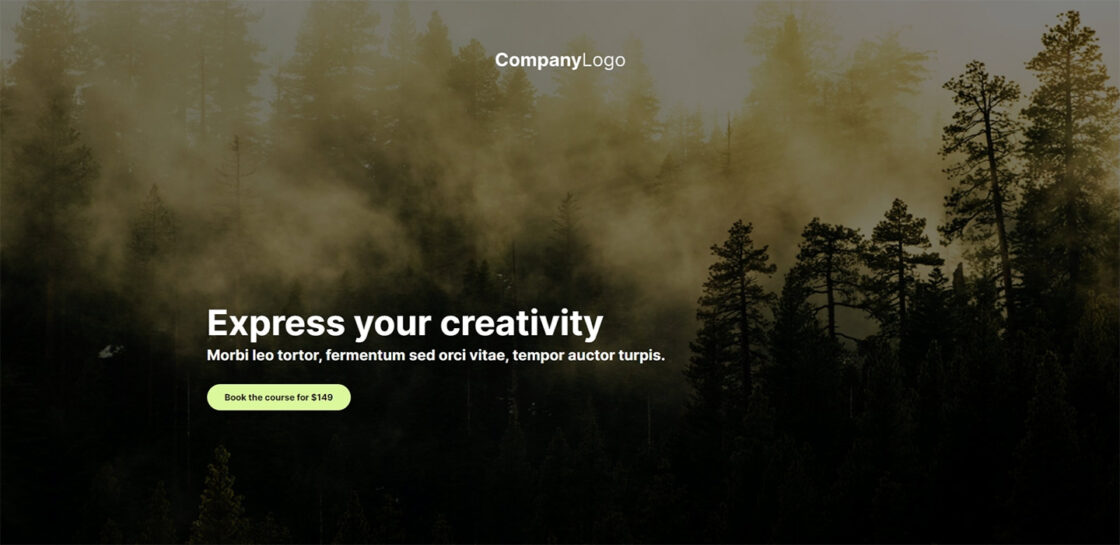
Landing pages allow you to showcase your products and services to support your sales. For example, you can sell a course, offer a service at an attractive price or showcase your best-selling products.
Lead generation

Landing pages are a powerful tool to generate new leads and paying customers. With a landing page, you can introduce visitors to your product or service, explain why they should buy it, and get them to take the action you want them to take. This could be contacting you or filling out a form, for example.
Offers
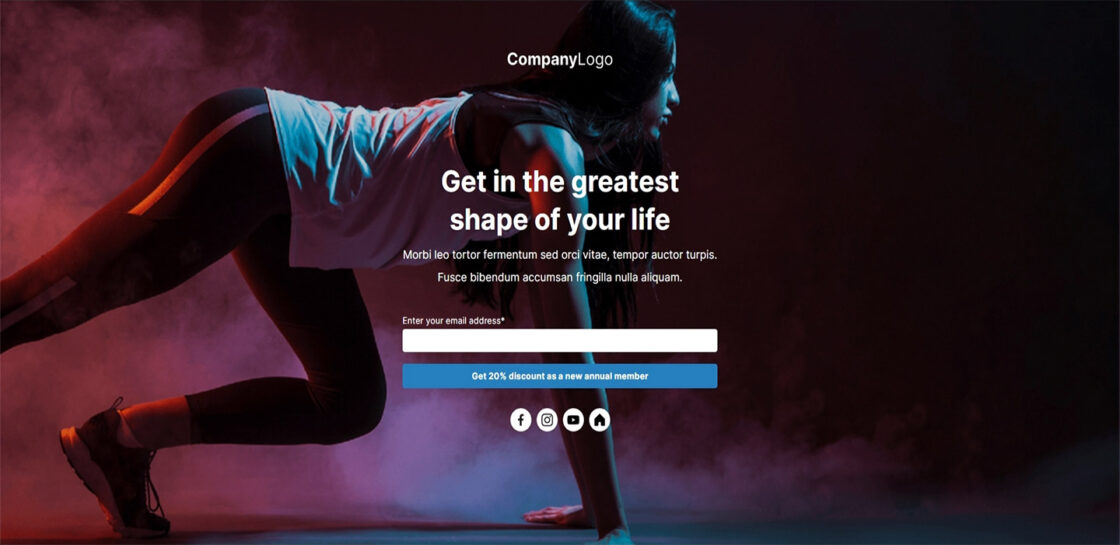
Create a landing page where you give visitors something of high value in exchange for their email addresses. This could be an annual discount, a free consultation, or a free guide, for example.
Waiting lists

Do you have a collection of new products coming soon? Use this opportunity to get customers and visitors to join your waiting list with a landing page and collect their email addresses. Once you launch your collection, you can easily send a newsletter to these people who have already shown interest in you and your products.
Signups

You can easily create a landing page to get new visitors and potential customers to subscribe to your newsletter. On the landing page, you should make it clear what your visitors will get when they sign up for your newsletter. In the example above, you can tell visitors that they’ll receive news and exclusive offers that only subscribers get.
Are you ready to get more leads and paying customers with landing pages?
Create an account and start a free 14-day trial to get started creating landing pages. Choose from over 25 templates to get started quickly or create your own template from scratch.
Get started with landing pages
Start a 14-day trial with Get a Newsletter and create your first landing page.


Leave a Reply